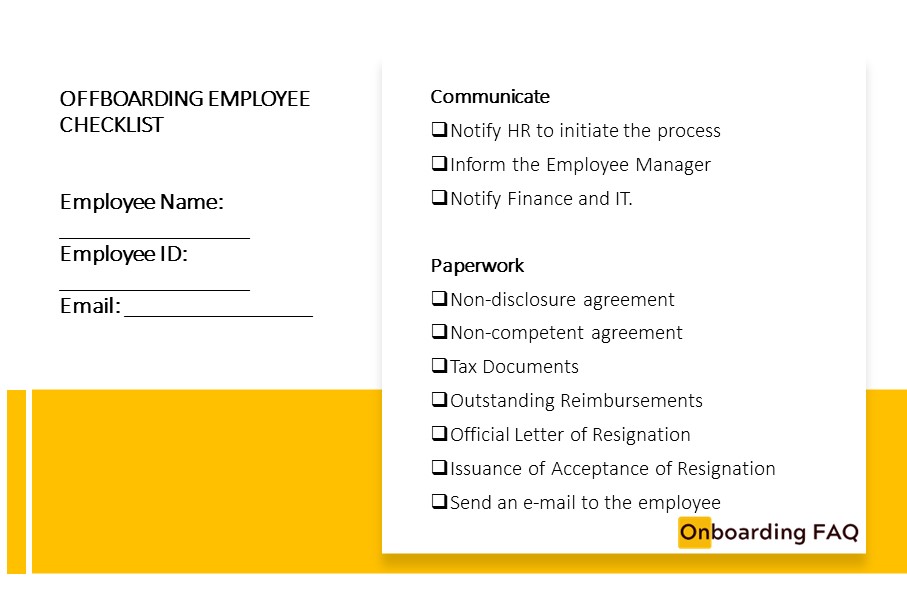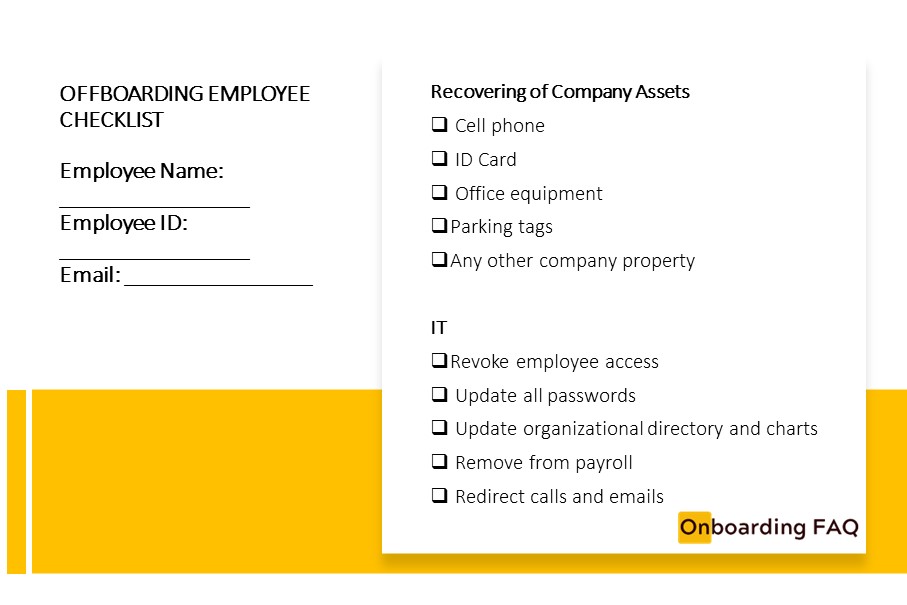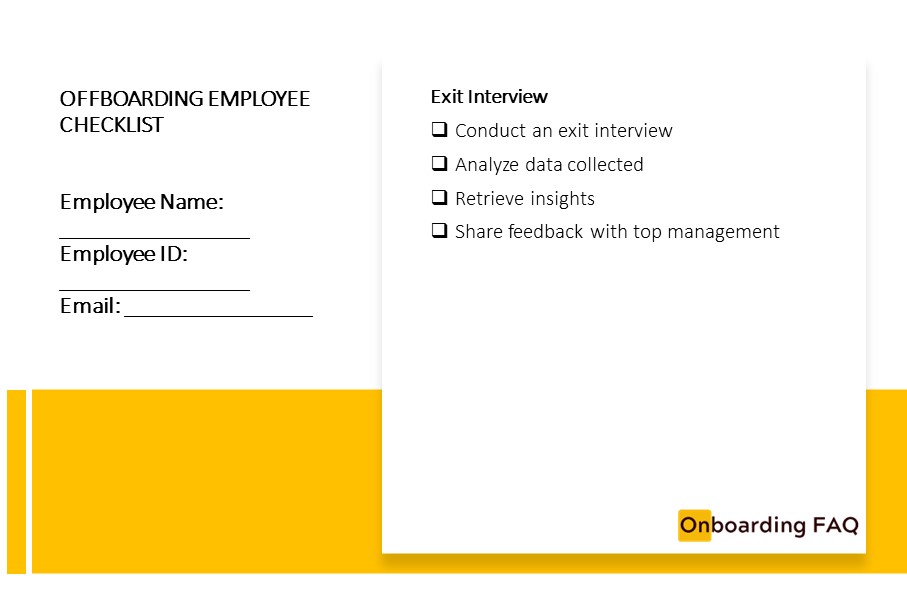An employee’s journey must come to an end. No matter for what reasons an employee leave, a standardized employee offboarding process will help in ensuring a smooth transition out of the company.
Companies often seem to ignore offboarding. They do share the excitement of a new journey by putting all their efforts into the new employee onboarding process, but they fail to share it when he leaves. The survey tells us that 58% of companies have a formal onboarding process while only 29% of them have a standard offboarding process.
They say that the first impression is the last impression, but the last impression can be as important as the first one. There is always a possibility that a former employee can return as a boomerang employee or be an active part of the company.
What is an employee offboarding checklist
The purpose of the employee offboarding checklist is to make sure that all the required steps and actions are completed before the employee leaves. A checklist often contains a checkbox that ensures all relevant managers do not forget their important tasks. It will help them be on the same page.
Check List Content
Checklists are always highly recommended for important tasks. It provides control over work and ensures that no tasks are skipped. The employee offboarding checklist may vary from employee to employee but some important tasks remain constant for every checklist.
Communicate
Communication is the key. When an employee submits his/her resignation it is essential to communicate his departure. It helps in avoiding unnecessary gossiping in the company. No one wants rumors disrupting the workplace. Clear communication is the base of ensuring the smooth operation of the offboarding process.
Make sure to let the relevant people know about his departure. This will include the direct team, subordinates, IT, administration, and finance department. Each of them will play a small role in carrying out the offboarding process. The information can also be shared with the client if the employee is in a customer-facing role.
Paperwork
Once the employee’s departure is communicated, the paperwork shall start. It will include collecting resignation, issuing a letter of acceptance of resignation, and filling out non-disclosure, and non-competent agreement forms.
HR must also in coordination with finance take care of tax documents and see if the leaving employee has any outstanding reimbursement. The paperwork helps in keeping the information in order, secure, and easily accessible. It further streamlines communication and improves agility.

Recover company assets
The next step involves recovering company assets. Any company possession must be taken away from the employee before he leaves. It should also be very clear to employees that all property, confidential information, and company property must be returned.
Assets will include all technology items such as cell phones, laptops, chargers, adapters, phone accessories, and other office equipment. Moreover, he will also return his ID card, uniform parking tags, company keys, client documents, and credit card. Often companies fail to recover the assets which can add up to serious loss.
Revoke IT access
The information technology department plays a vital role in the offboarding process. For the safety of the company, it is important to revoke system access. According to a survey, 1 in 4 employees still have access to accounts from their previous jobs.
The IT team must disable all passwords, email accounts, personal computers, and any other internal network to which he had access of. All sensitive information must be secured. Moreover, they need to remove him from the payroll, update information on the organizational directory and redirect his calls.

Exit Interview
Last but not least the human resources will conduct exit interviews. It is a survey conducted face-to-face with the departing employee. This interviewer inquiries about the reason for quitting and asks for feedback on his stay in the company.
The purpose of the exit interview is to help maintain a positive culture in the organization. The information gathered from the exit interview is further analyzed to retrieve insights. The feedback helps in making necessary changes in the company and its processes.

Final thought
Offboarding is an essential part of the employee journey and must not be overlooked. It may be an uncomfortable process, but our efforts can make the departing employee experience smooth, thoughtful, and memorable.
A former employee can still be an ambassador of the company. Their feedback is most valuable to the organization as it affects their brand image. He can also join back into the company and bring new skills and ideas with him.
All this can happen if the offboarding program is well-developed and implemented. The process should be drafted in such a way that feedback from departing employees becomes a source of making positive changes in the company.


